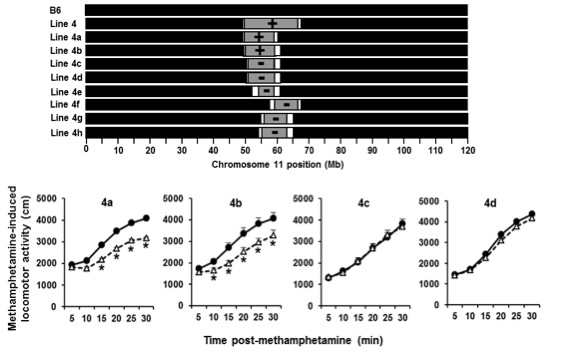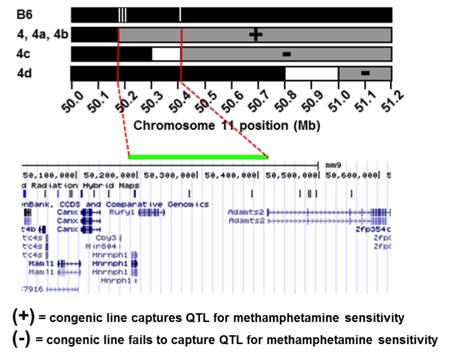Candidate gene testing of Rufy1 and Hnrnph1 for methamphetamine sensitivity
Dr. Bryant recently generated a panel of 17 interval-specific congenic mice to identify a 0.25 Mb locus on chromosome 11 that regulates the locomotor stimulant response to methamphetamine (MA) (manuscript in preparation). This genomic region contains only two possible quantitative trait genes that could be responsible for the QTL: Rufy1 and Hnrnph1. Rufy1, also known as Rabip4, codes for an early endosomal protein that interacts with Rab proteins including Rab4 and Rab5. We hypothesize that a known coding polymorphism within Rufy1 alters methamphetamine-induced trafficking of its primary molecular targets – the monoamine transporters – which in turn affects dopamine release, uptake, and behavior. We are directly targeting Rufy1 in vivo using TALENs technology and will directly test the role of Rufy1 in methamphetamine-induced transporter trafficking, dopamine uptake/release, and behavior. We are also targeting the second gene within the QTL interval, Hnrnph1, and examining its effect on gene transcription and behavior. Hnrnph1 is a heterogenous nuclear ribonucleoprotein that has been shown to regulate processing of microRNAs (miRNAs) and thus, could affect the expression of gene networks. The results of these studies will lead to the identification of the quantitative trait gene (QTG) that underlies the QTL responsible for genetic variation in methamphetamine sensitivity. Future directions will include examining this QTG in other conditions that could potentially be affected by dopaminergic function (Parkinson’s, ADHD, schizophrenia) and determining its role in regulating the motivational responses to methamphetamine and other substances of abuse.




